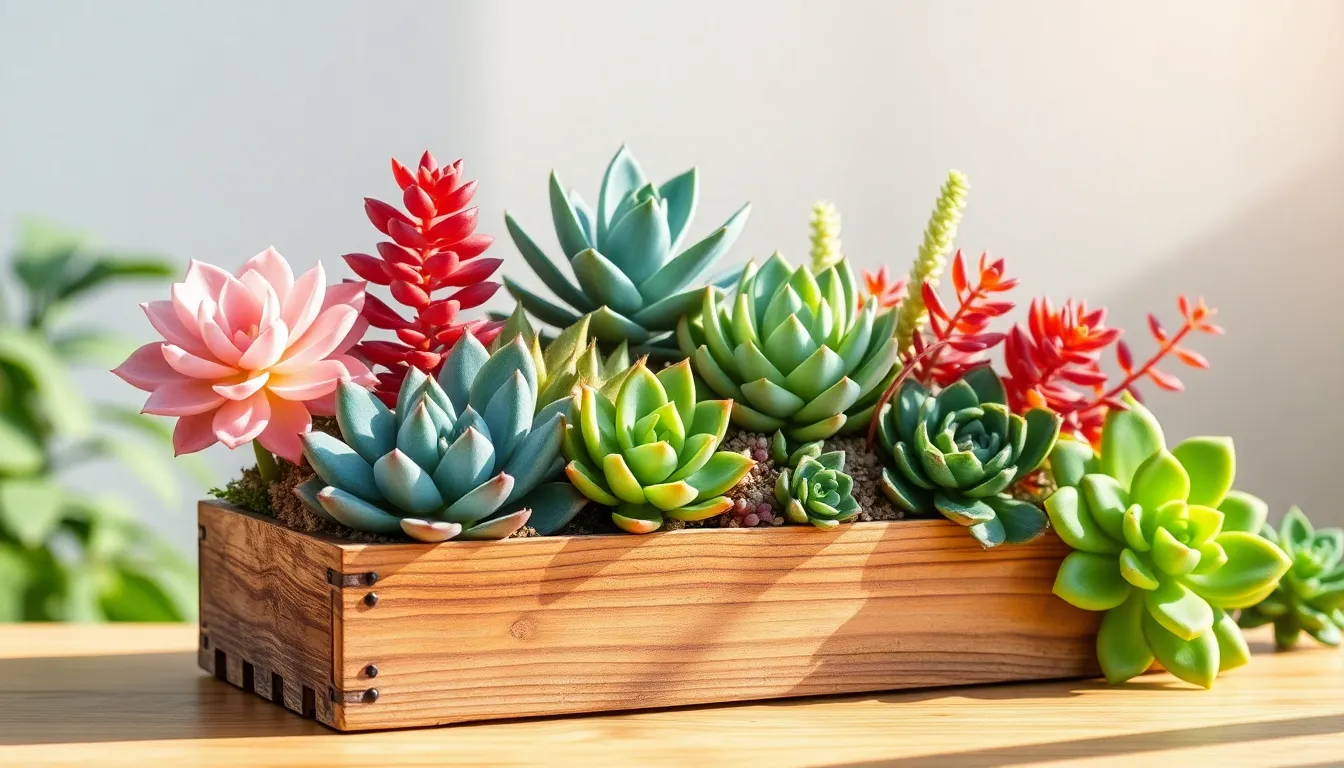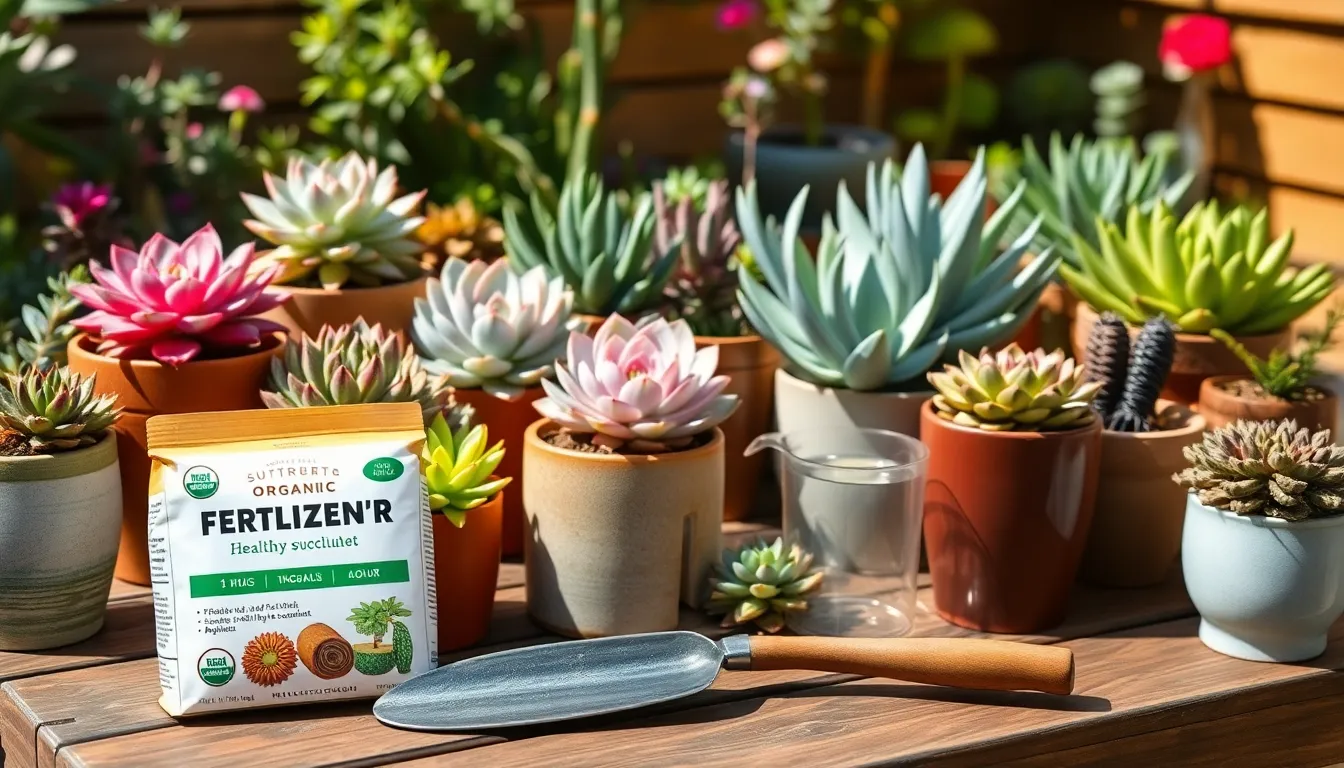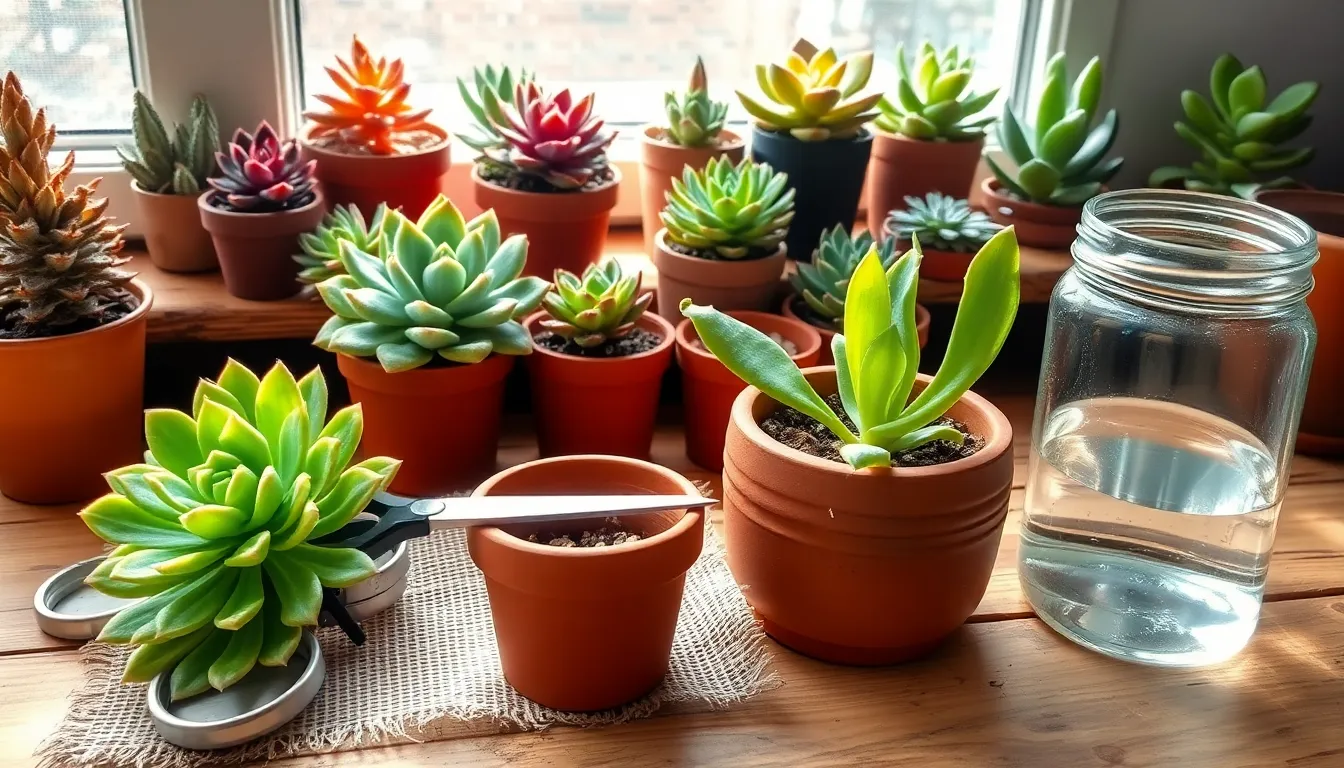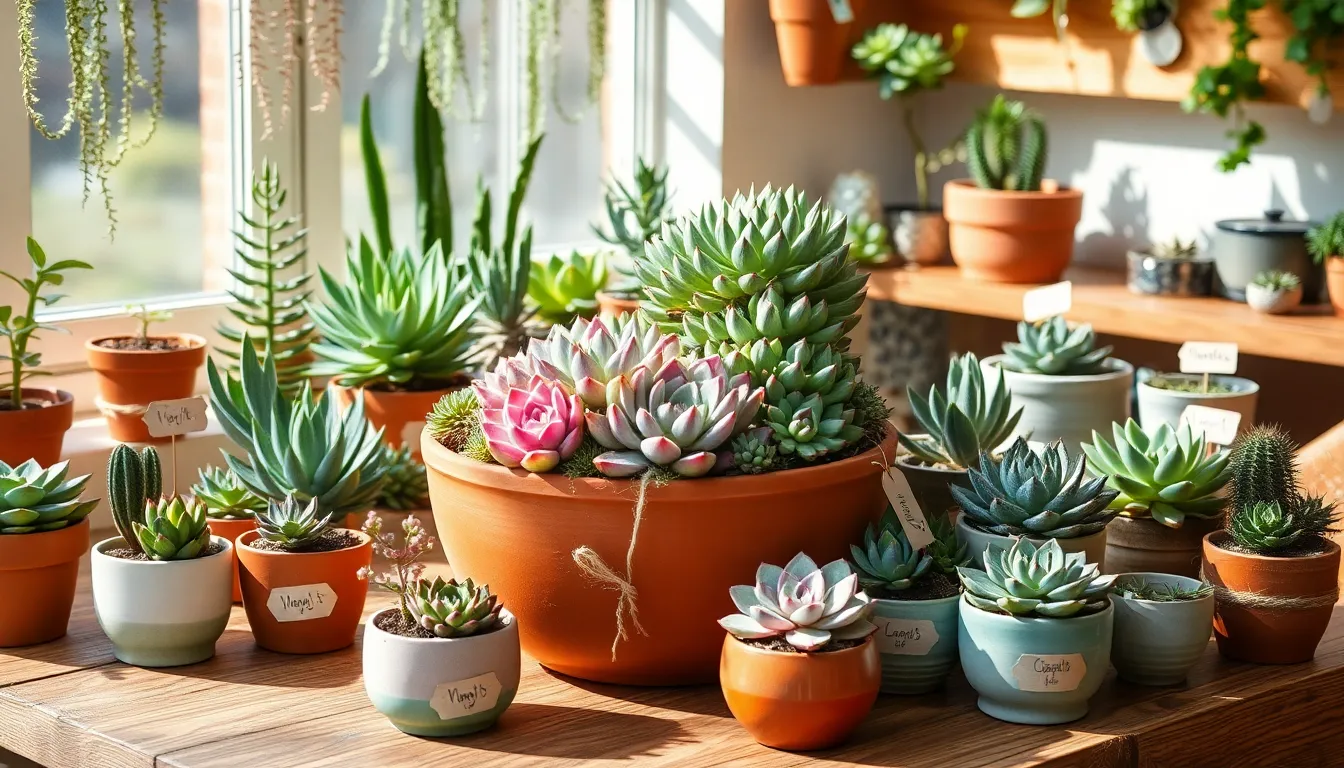Step into the alluring world of succulents, where beauty and resilience come together to create living art that thrives even in the most modest of spaces. Whether you’re a green-thumbed veteran or a curious beginner, these 18 eye-catching varieties promise to add a touch of magic to your garden, balcony, or windowsill.
This curated list is more than just a roll call of captivating plants; it’s a treasure trove of practical insights that will empower you to cultivate these stunning specimens with confidence. From drought-defying wonders to vibrant showstoppers, you’ll discover not only how to grow them but also how to make them flourish, turning your gardening endeavors into a journey of joyful success.
Introduction to Succulent Varieties
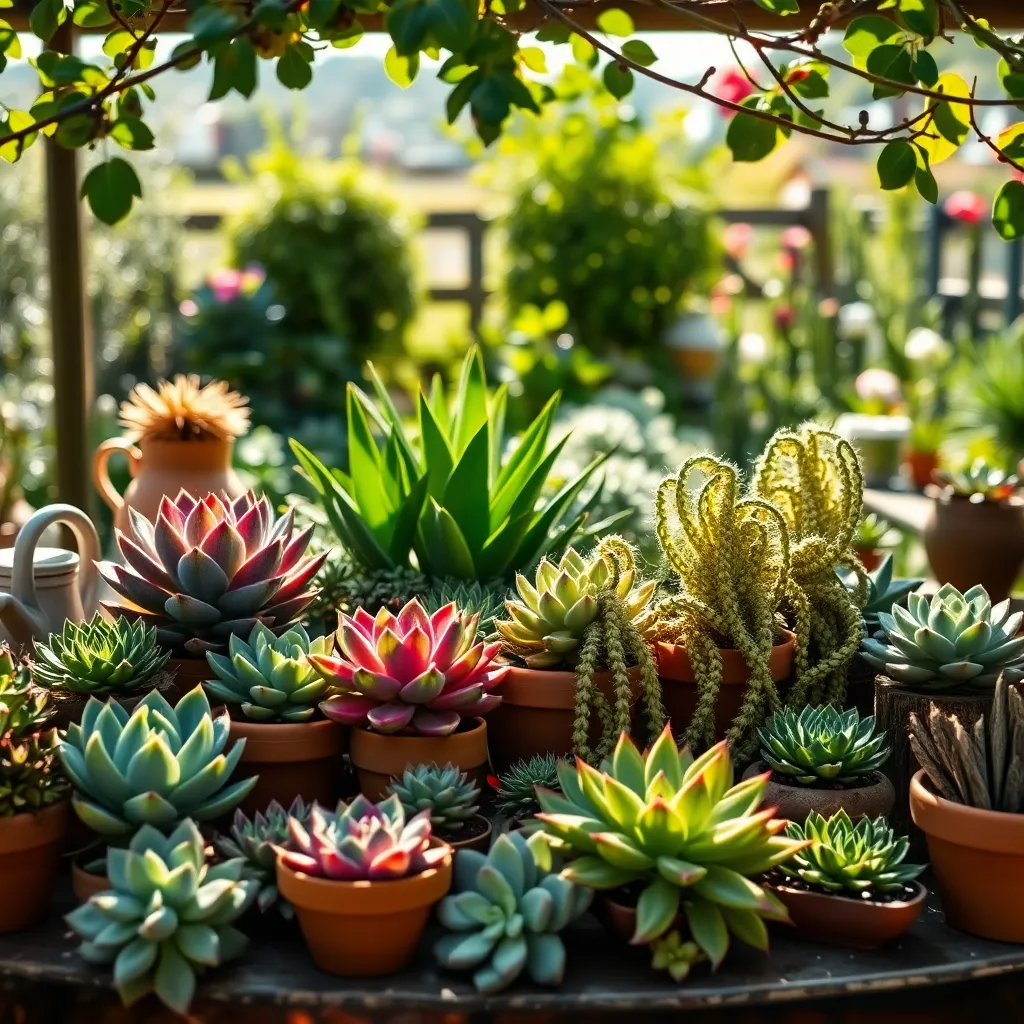
Succulents are a diverse group of plants known for their ability to store water in their leaves, stems, or roots. This makes them incredibly resilient and ideal for those who are just starting with gardening or have limited time for plant care.
To successfully grow succulents, it’s crucial to provide them with the right type of soil. Opt for a well-draining soil mix, which you can create by combining equal parts of potting soil, coarse sand, and perlite or pumice.
When it comes to watering, the key is moderation—succulents prefer their soil to dry out completely between waterings. In general, a good rule of thumb is to water them thoroughly once every two weeks, adjusting based on the humidity and temperature of your environment.
Light is another critical factor in growing healthy succulents. Most succulents thrive in bright, indirect sunlight, so place them near a south or east-facing window for the best results.
For those looking to expand their succulent collection, consider propagating your plants. Propagating succulents is easy—simply take a leaf cutting, let it dry for a few days, and place it on top of the soil until roots form.
Choosing Vibrant Echeveria Types
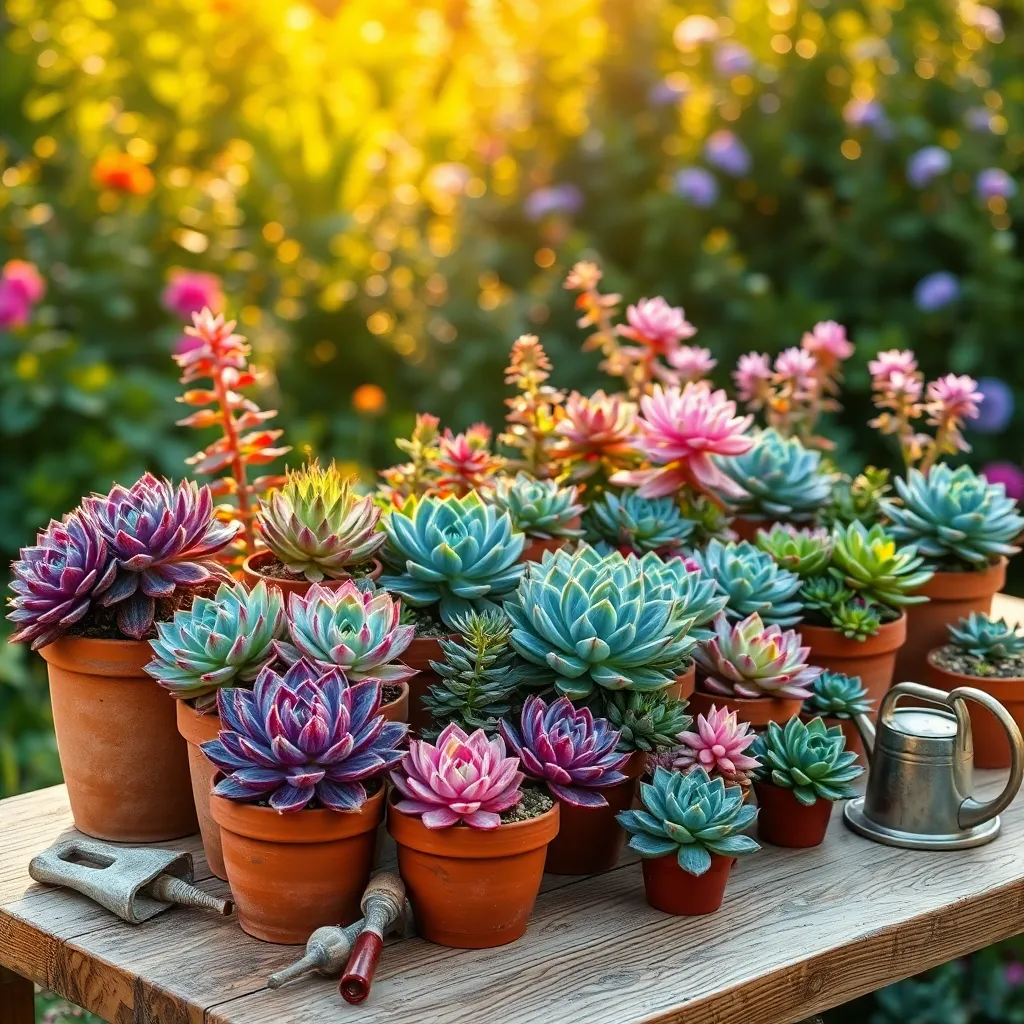
When selecting vibrant Echeveria types for your garden, consider their stunning rosette shapes and diverse color palettes. These succulents thrive in well-draining soil, so mix cactus soil with perlite for optimal growth.
Although Echeverias are drought-tolerant, they benefit from regular watering during the growing season. Allow the soil to dry out completely between waterings to prevent root rot, a common issue with these beauties.
For those seeking a deeper dive into Echeveria care, provide them with bright, indirect light for vibrant colors and healthy growth. A south or east-facing window is ideal if you’re growing them indoors.
Advanced gardeners can experiment with propagating Echeverias by leaf cuttings, a rewarding technique that expands your collection. Simply detach a healthy leaf, let it callous over for a couple of days, then place it on well-draining soil, misting occasionally until new roots develop.
Exploring Hardy Aloe Species
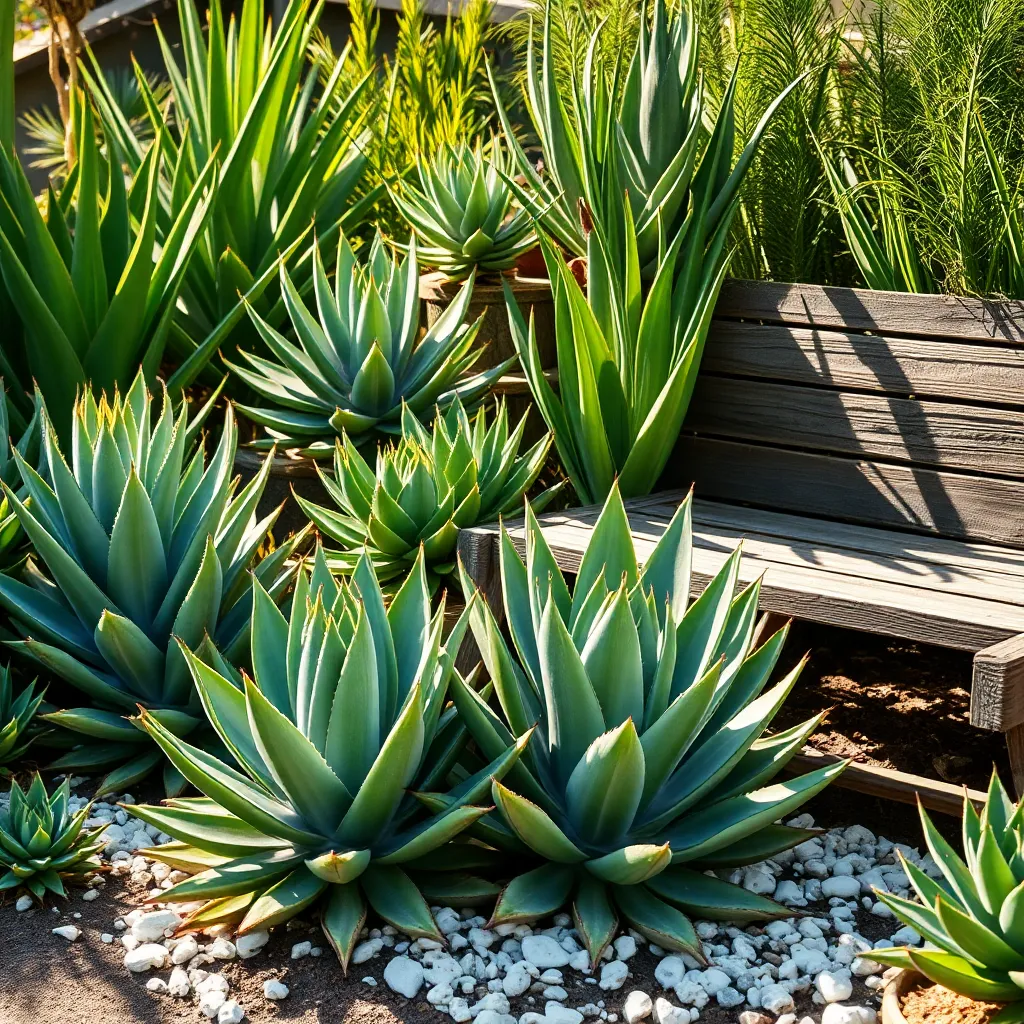
Among the vast array of succulents, hardy aloe species stand out for their resilience and distinctive beauty. These succulents are perfect for gardeners seeking low-maintenance plants that can thrive in various conditions.
One of the most adaptable options is the Aloe arborescens, known for its striking red flowers. This species prefers well-draining soil, so choose a cactus mix or create your own by combining equal parts sand, potting soil, and perlite.
Watering hardy aloes is simple if you follow a “soak and dry” method. Allow the soil to completely dry out between waterings to prevent root rot, which is a common issue with overwatering.
For those in colder regions, consider Aloe aristata, which can tolerate temperatures down to 20°F (-6°C) when established. Protect these aloes by covering them during extreme cold spells or bringing potted specimens indoors.
Incorporating hardy aloes into your garden requires just a few basic steps for success. Ensure they receive at least six hours of sunlight daily to maintain their vibrant colors and promote healthy growth.
Enchanting Haworthia Selections

Haworthias are a captivating group of succulents that are perfect for both beginners and seasoned gardeners. Known for their diverse leaf patterns and shapes, these plants thrive indoors, making them an excellent choice for indoor gardening enthusiasts.
When caring for Haworthias, it’s crucial to provide them with well-draining soil, such as a cactus mix or a homemade blend of sand, perlite, and potting soil. Watering should be done sparingly, allowing the soil to dry out completely between waterings to prevent root rot.
Placing Haworthias in bright, indirect light will help them maintain their vibrant appearance, though they can tolerate some direct sunlight. If you notice the leaves losing their vivid color, consider moving them to a slightly shadier spot to avoid sunburn.
For those looking to propagate their collection, Haworthias can be easily multiplied through offsets that grow at the base of the parent plant. Simply detach these offsets and plant them in their own pots, providing the same care as the mother plant to ensure successful growth.
Unique Lithops: Living Stones
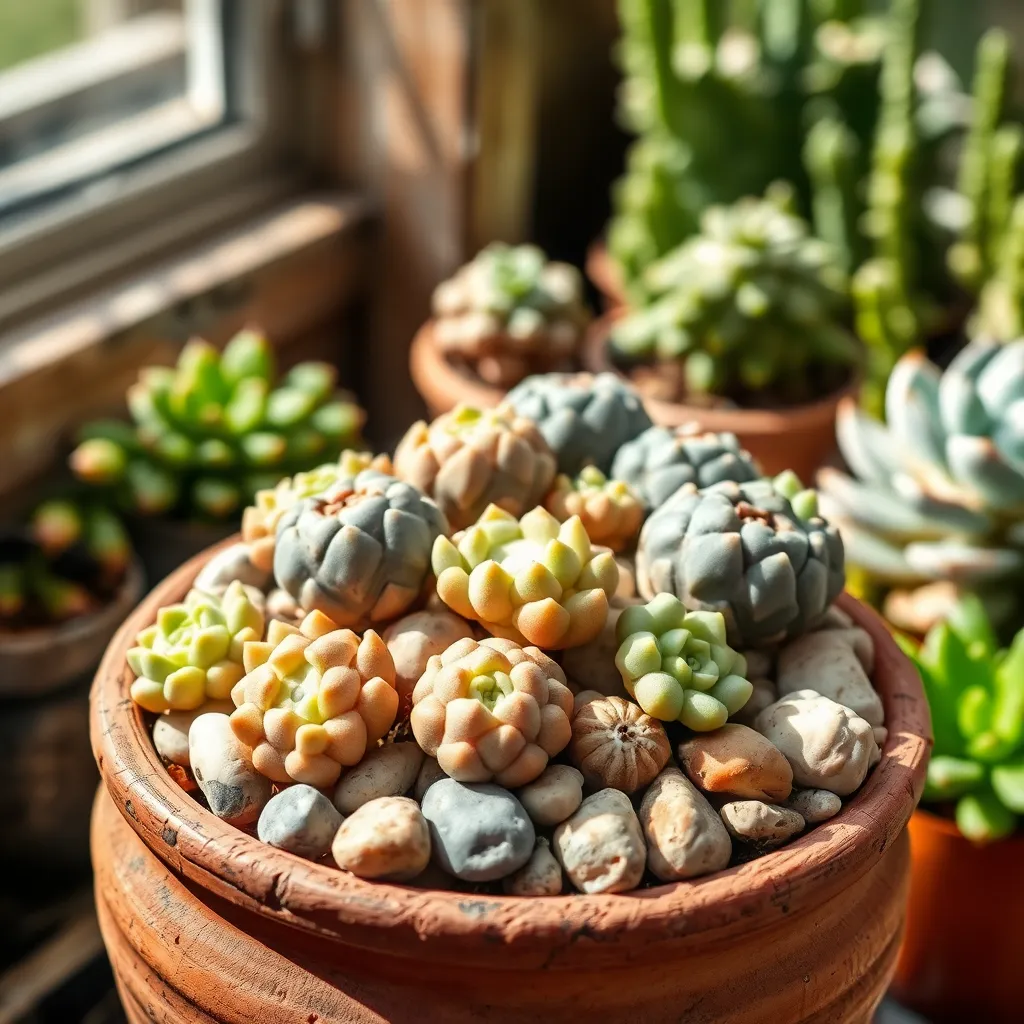
Lithops, often referred to as “living stones,” are a fascinating group of succulents that mimic the appearance of rocks to avoid being eaten in their native environment. To successfully grow Lithops, use a gritty, fast-draining soil mix to prevent root rot, as they are highly susceptible to overwatering.
These unique succulents thrive in bright, indirect sunlight, making them perfect for sunny windowsills. Avoid direct midday sun as it can scorch their delicate leaves; instead, aim for a few hours of morning sun to keep them healthy.
Watering Lithops requires some finesse, as they only need to be watered sparingly. During their active growth period, which typically occurs in spring and autumn, water when the soil has completely dried out, and cease watering during their dormant phase in summer and winter.
For more experienced gardeners, propagating Lithops can be an exciting challenge. They can be propagated by seeds, but keep in mind that this process is slow and requires patience; seedlings should be kept moist until they establish.
Striking Agave Varieties
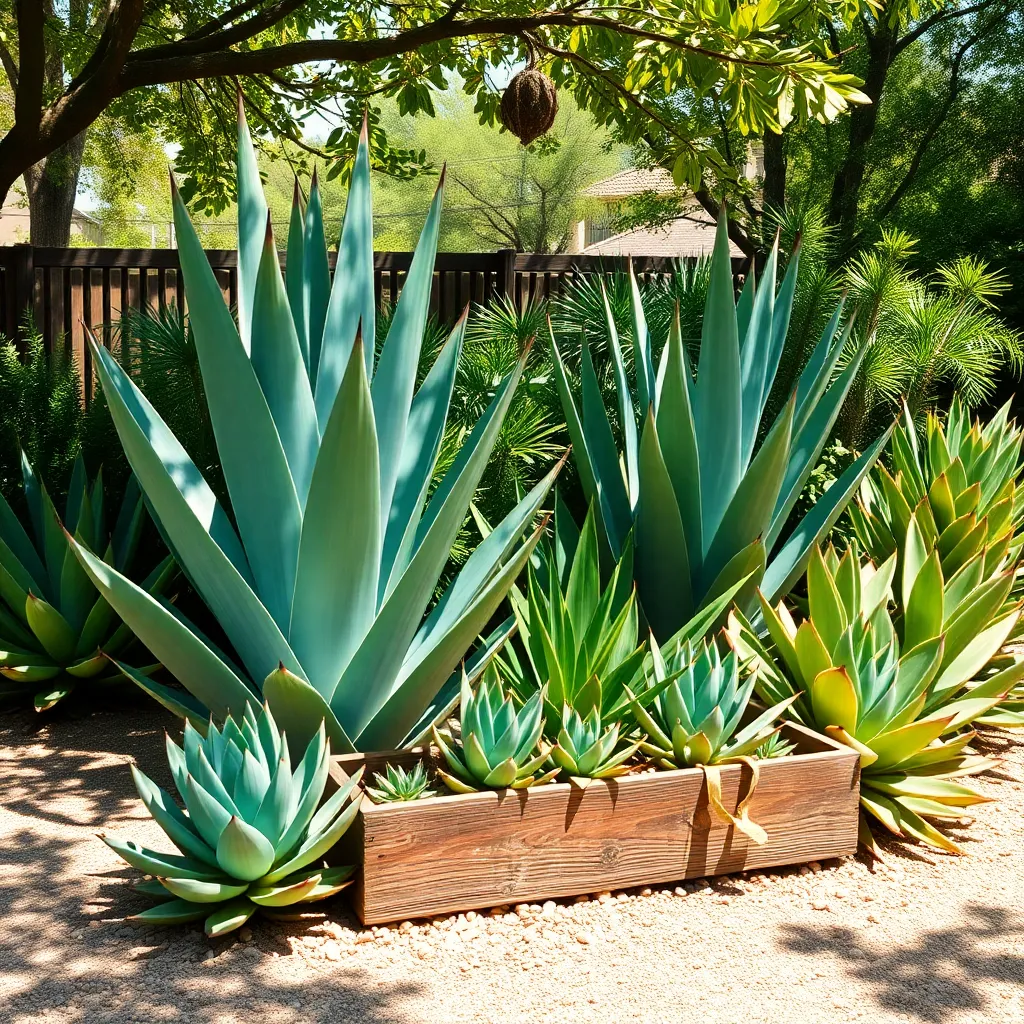
Agave plants are known for their dramatic forms and low-maintenance nature, making them a favorite among succulent enthusiasts. These striking plants thrive in well-draining soil, so consider using a cactus soil mix or adding sand to regular potting soil to achieve the best results.
When it comes to watering, agaves prefer to be on the drier side. Water them sparingly, allowing the soil to dry out completely between waterings, particularly in winter when their growth slows down.
For beginners, the Agave Americana, or Century Plant, is an excellent choice due to its resilience and adaptability. It can tolerate a range of conditions, but placing it in a sunny spot will help it thrive.
Experienced gardeners might explore the Agave Victoriae-Reginae, known for its compact size and beautiful symmetry. This variety prefers bright, indirect light and can be a stunning focal point in any garden or container arrangement.
Colorful Sedum Selections
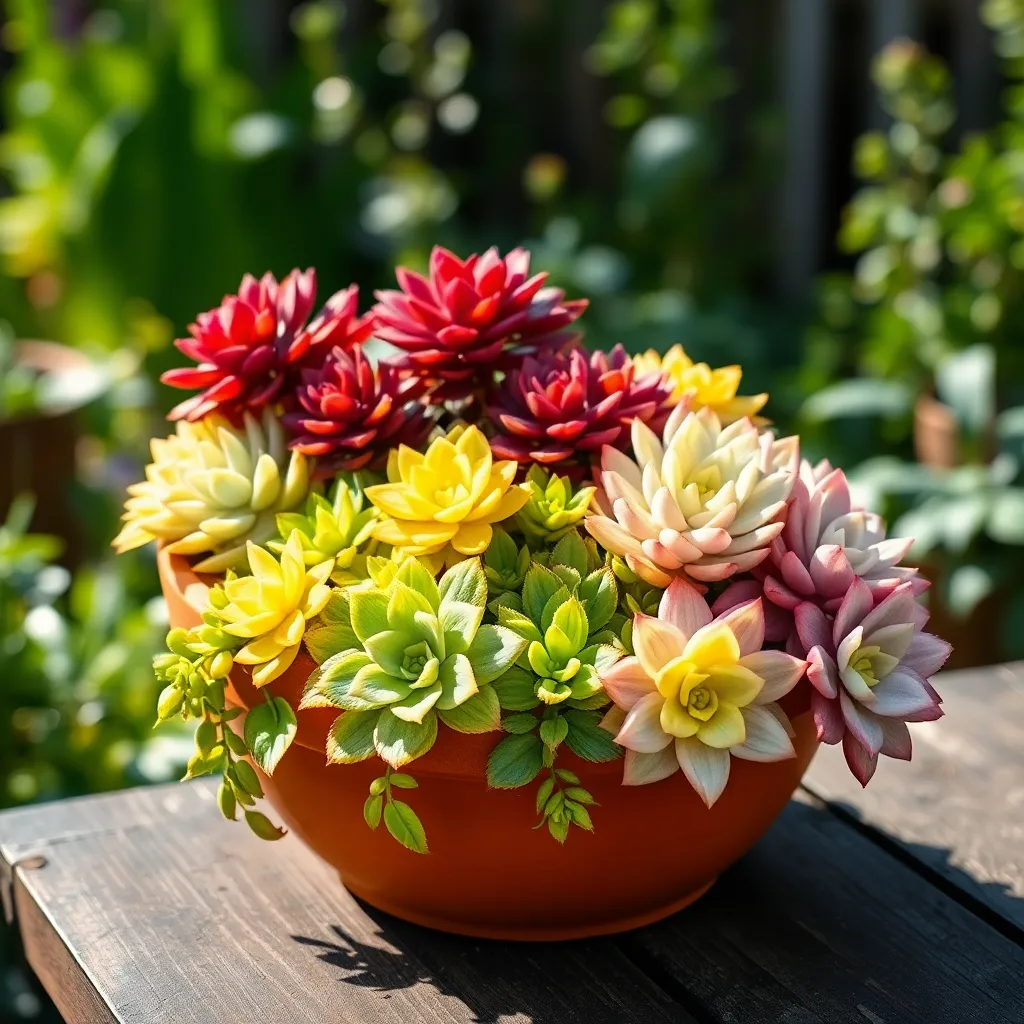
For gardeners seeking vibrant hues and easy maintenance, sedums offer an exceptional choice. These rugged succulents come in a range of colors and are known for their ability to thrive in various conditions, making them perfect for both beginners and experienced gardeners.
To start with, consider the Autumn Joy sedum, which dazzles with its stunning pink flowers that turn a beautiful russet in the fall. This variety thrives in well-draining soil, so mix in sand or grit to improve drainage if your garden soil is heavy.
Another excellent option is the Dragon’s Blood sedum, particularly prized for its deep red foliage. It’s a ground-hugging variety that can spread quickly, making it ideal for covering bare spots in a garden; simply ensure it receives full sun for the best color development.
For those looking for a unique twist, the Angelina sedum offers golden foliage that shifts to rich orange in cooler temperatures. Plant it in a location where it can bask in at least six hours of sunlight daily, and water sparingly to prevent over-saturation.
When integrating sedums into your garden, remember these key tips:
- Space plants properly to allow for air circulation and reduce the risk of disease.
- Use a balanced, slow-release fertilizer in spring to encourage healthy growth.
- Prune back dead stems in late winter to make way for new growth in spring.
With these vibrant sedum selections, your garden will burst into color, providing visual interest throughout the seasons.
Captivating Crassula Choices
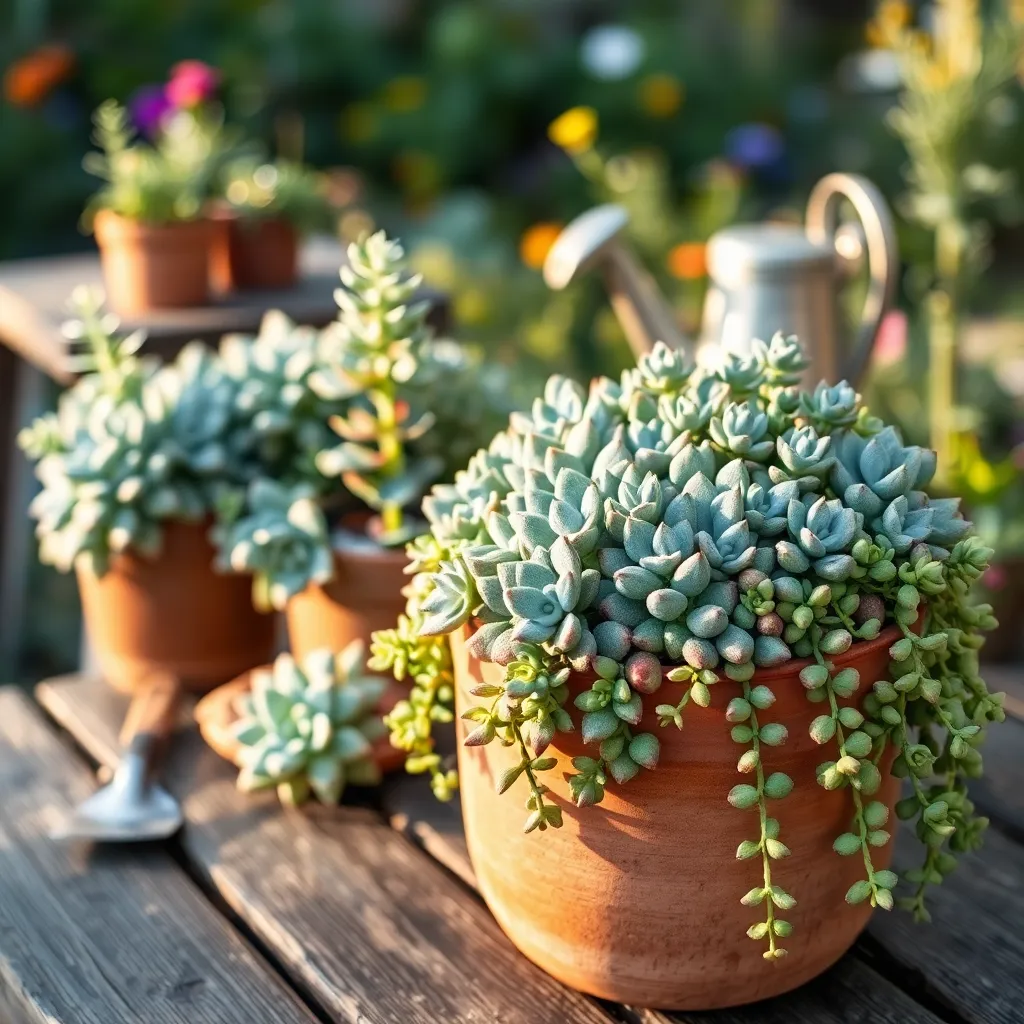
Crassula plants are a delightful choice for gardeners looking to add texture and intrigue to their succulent collection. These versatile plants thrive in a variety of conditions, making them suitable for both indoor and outdoor gardens.
When planting Crassula, it’s essential to use a well-draining soil mix to prevent root rot. A combination of cactus soil and perlite is ideal, ensuring the roots stay healthy and dry.
While they are drought-tolerant, Crassula plants do appreciate a regular watering schedule. Allow the soil to dry completely between waterings, typically every 1–2 weeks, depending on your climate and the season.
For those looking to propagate their Crassula, leaf cuttings are an easy and effective method. Simply place a healthy leaf on top of moist soil and watch as new roots begin to form in a few weeks.
Dramatic Kalanchoe Varieties

For those who seek a touch of drama in their succulent collection, the Kalanchoe genus offers striking options. Known for their vibrant colors and intriguing leaf shapes, Kalanchoes are a show-stopping addition to any garden.
One popular variety is the Kalanchoe luciae, also known as the Paddle Plant. This plant’s thick, round leaves turn scarlet when exposed to bright sunlight, creating a stunning visual effect. To achieve this coloration, ensure your Paddle Plant receives at least six hours of direct sunlight daily. Additionally, plant it in well-draining soil, such as a mix of cactus soil and perlite, to prevent root rot.
For gardeners looking to add texture, the Kalanchoe tomentosa, or Panda Plant, presents a unique choice with its fuzzy, velvety leaves. These leaves feature brownish-red edges, adding a subtle yet captivating contrast. Maintain a watering schedule of every two to three weeks, allowing the soil to dry out completely between waterings. Overwatering can lead to root rot, so it’s crucial to err on the side of underwatering.
Advanced gardeners might appreciate the Kalanchoe marmorata, known for its marbled leaf pattern and delicate white flowers. This variety thrives best in warm, dry climates and requires a bit more attention to detail. To boost flowering, feed it with a balanced succulent fertilizer during its growing season in spring and summer. Regularly rotate your plant to ensure even growth and prevent it from leaning toward the light source.
Charming Sempervivum Options
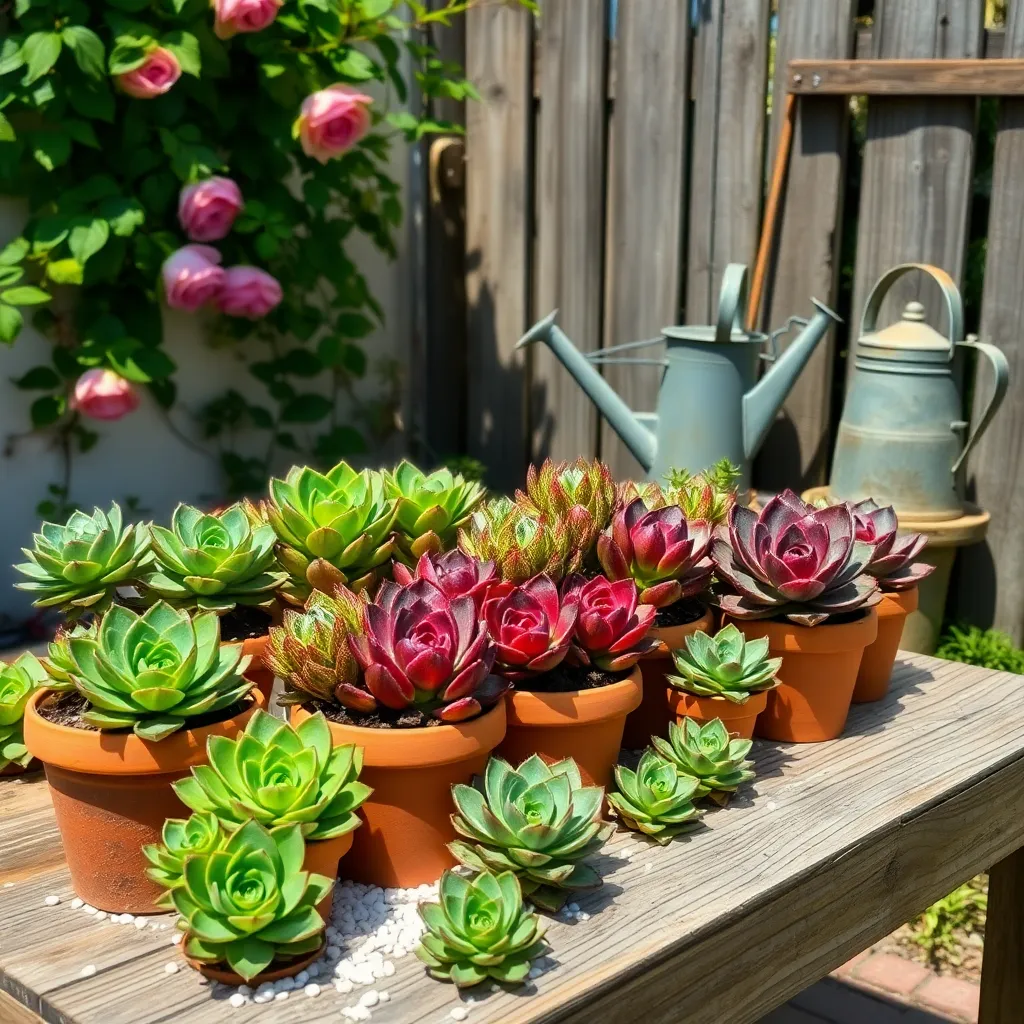
Sempervivum, commonly known as hens-and-chicks, are a delightful addition to any succulent collection. These rosette-forming succulents are not only visually appealing but also incredibly hardy, thriving in a range of conditions.
To ensure your Sempervivum thrive, plant them in a well-draining soil mix, ideally a combination of cactus mix and perlite. It’s crucial to avoid overwatering; let the soil dry out completely between waterings to prevent root rot.
These resilient plants prefer full sun exposure, which enhances their vibrant colors and compact growth. However, they can tolerate partial shade if you’re in a region with intense afternoon heat, making them versatile across different climates.
For gardeners looking to propagate, Sempervivum are exceptionally rewarding. Simply separate the offsets, or “chicks,” from the mother plant, allowing them to dry for a day before planting in a new pot or garden bed.
Intriguing Graptopetalum Types
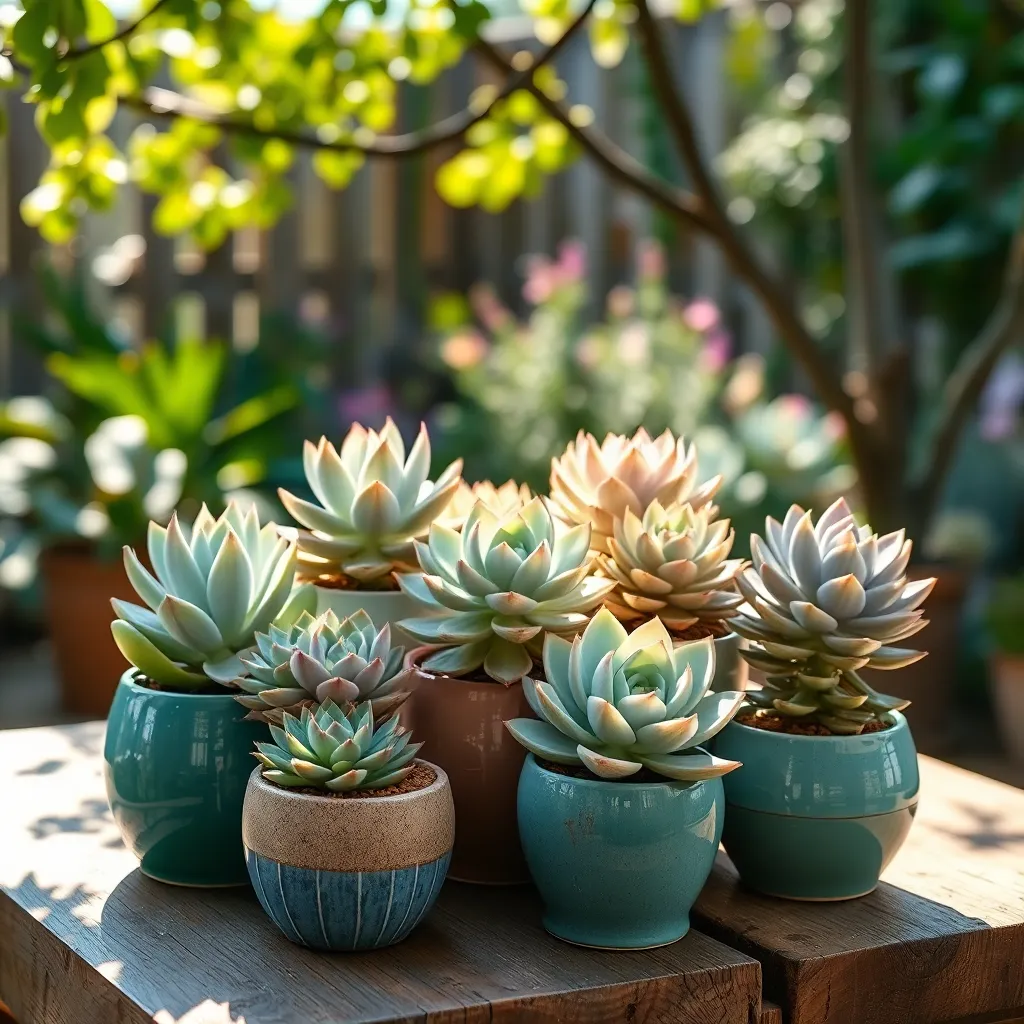
Graptopetalum is a fascinating genus of succulents known for their unique rosette shapes and vibrant colors. These plants thrive in well-draining soil, so consider using a cactus mix or adding sand to your regular potting soil to improve drainage.
One of the most popular types is Graptopetalum paraguayense, often called the Ghost Plant. Its dusty, bluish-gray leaves turn pinkish under full sun, making it a striking addition to any succulent collection.
For those looking to cultivate Graptopetalum, it’s important to place them in a location with bright, indirect light. Direct sunlight can scorch the leaves, especially during the hottest part of the day, so a spot with morning sun and afternoon shade is ideal.
Watering should be done sparingly, allowing the soil to dry out completely between waterings to prevent root rot. As a general rule, water these succulents every two weeks during the growing season, reducing frequency in the winter months when growth slows down.
Fascinating Aeonium Varieties
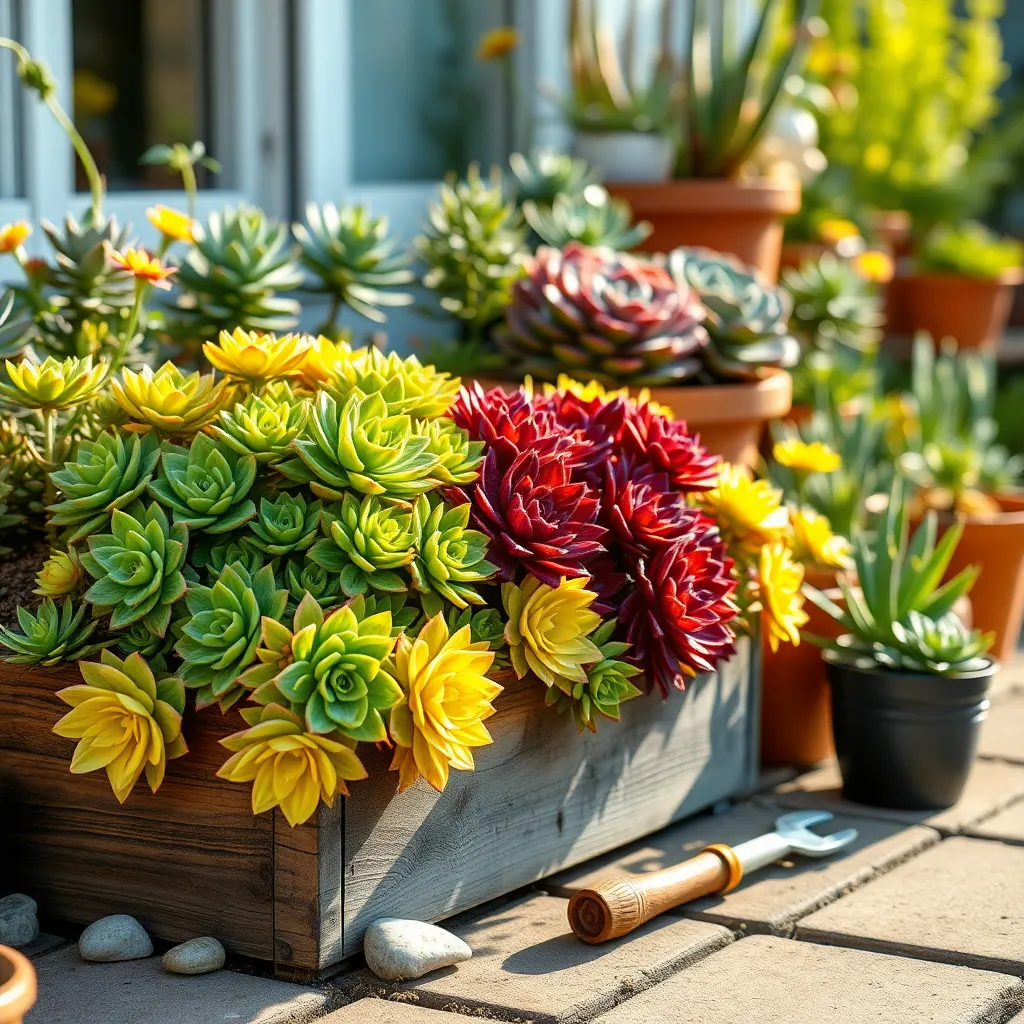
Aeoniums are a delightful addition to any succulent collection, offering unique rosette shapes and vibrant colors. These plants thrive in well-draining soil and prefer a sandy mix to prevent root rot.
Unlike many succulents, Aeoniums have a distinct growth cycle, actively growing in the cooler months of the year. Water them more frequently during their active growth period, usually from fall to spring, ensuring the soil dries out between waterings.
For beginners, the Aeonium ‘Zwartkop’ is a stunning choice with its deep burgundy leaves. Place it in a spot that receives bright, indirect sunlight to maintain its rich color and promote healthy growth.
Experienced gardeners might enjoy experimenting with the Aeonium ‘Sunburst,’ which features variegated leaves with yellow and green stripes. To enhance its vibrant coloring, provide morning sun and afternoon shade, especially in hotter climates.
Diverse Pachyphytum Selections
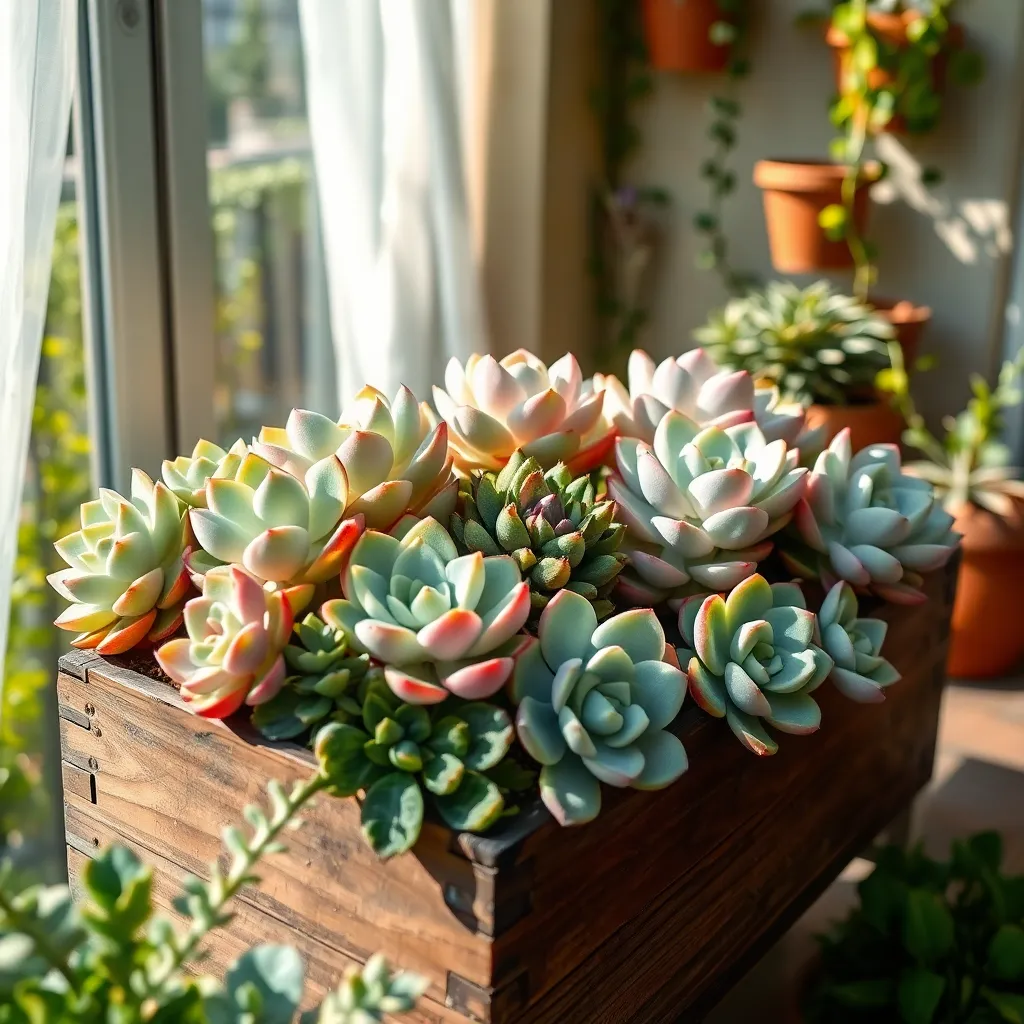
Pachyphytum, known for its plump, jewel-like leaves, offers a stunning addition to any succulent collection. These hardy plants thrive in well-draining soil, such as a cactus mix with added perlite, which prevents root rot and ensures healthy growth.
Position your Pachyphytum in a location where it receives bright, indirect light for optimal coloration and form. While they are drought-tolerant, water them deeply but infrequently; allow the soil to dry out completely between waterings.
For beginners, starting with Pachyphytum oviferum, commonly known as ‘Moonstones,’ is an excellent choice. This variety is not only visually appealing with its pastel hues but also forgiving if you occasionally miss a watering.
Advanced gardeners can experiment with propagation by gently removing a leaf and allowing it to callous over before planting it in moist, sandy soil. This technique is a rewarding way to expand your collection, though patience is key, as root formation may take several weeks under ideal conditions.
Eye-Catching Senecio Varieties
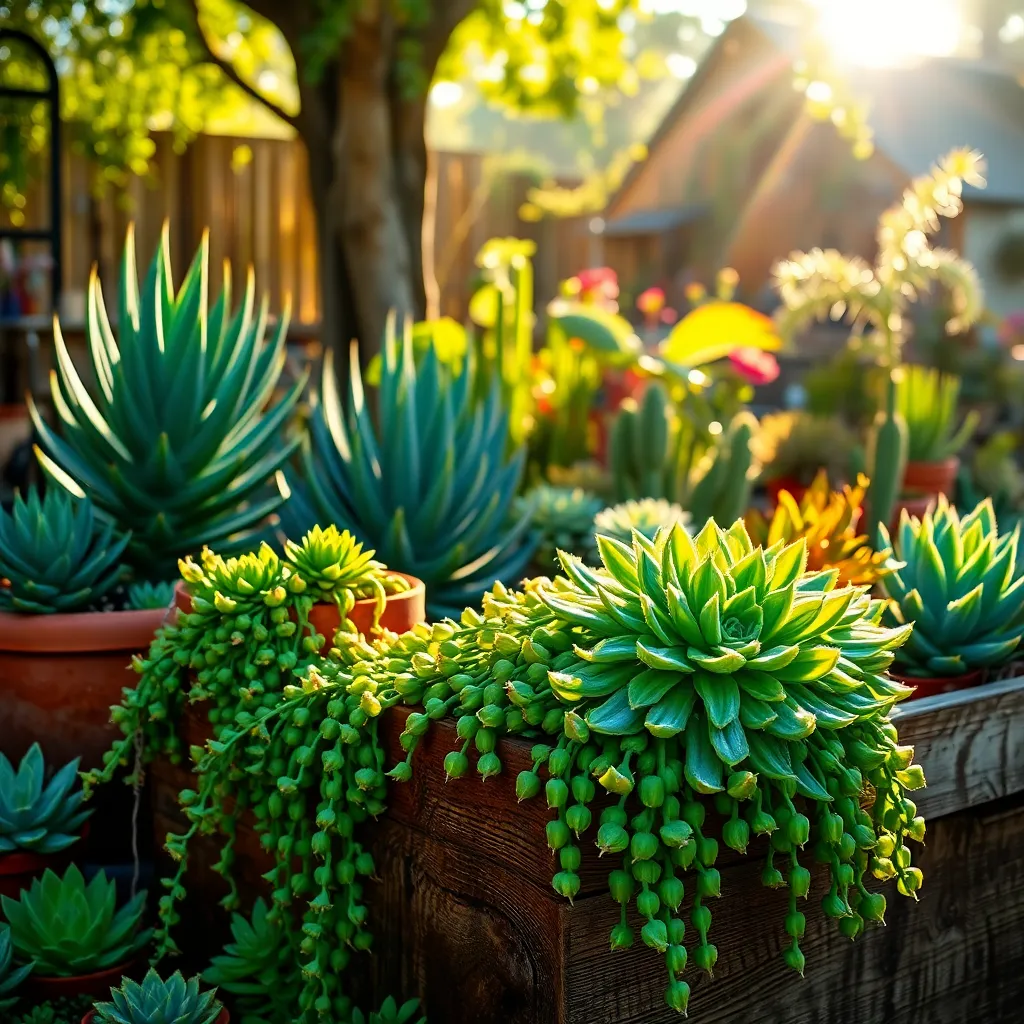
Senecio varieties bring unique textures and vibrant colors to any succulent collection. For the best results, plant them in well-draining soil, such as a cactus mix, to prevent root rot.
One striking variety is the Senecio rowleyanus, commonly known as String of Pearls. It thrives in bright, indirect light and requires watering every two weeks or when the soil completely dries out.
Consider adding Senecio mandraliscae, known as Blue Chalksticks, for its cool-toned foliage that complements warmer-colored plants. These resilient plants can tolerate full sun and are drought-tolerant, making them perfect for low-maintenance gardens.
To maximize growth, feed Senecio plants with a diluted, balanced liquid fertilizer during the growing season. Prune regularly to maintain shape and encourage bushier growth, especially for trailing varieties.
Vibrant Dudleya Options
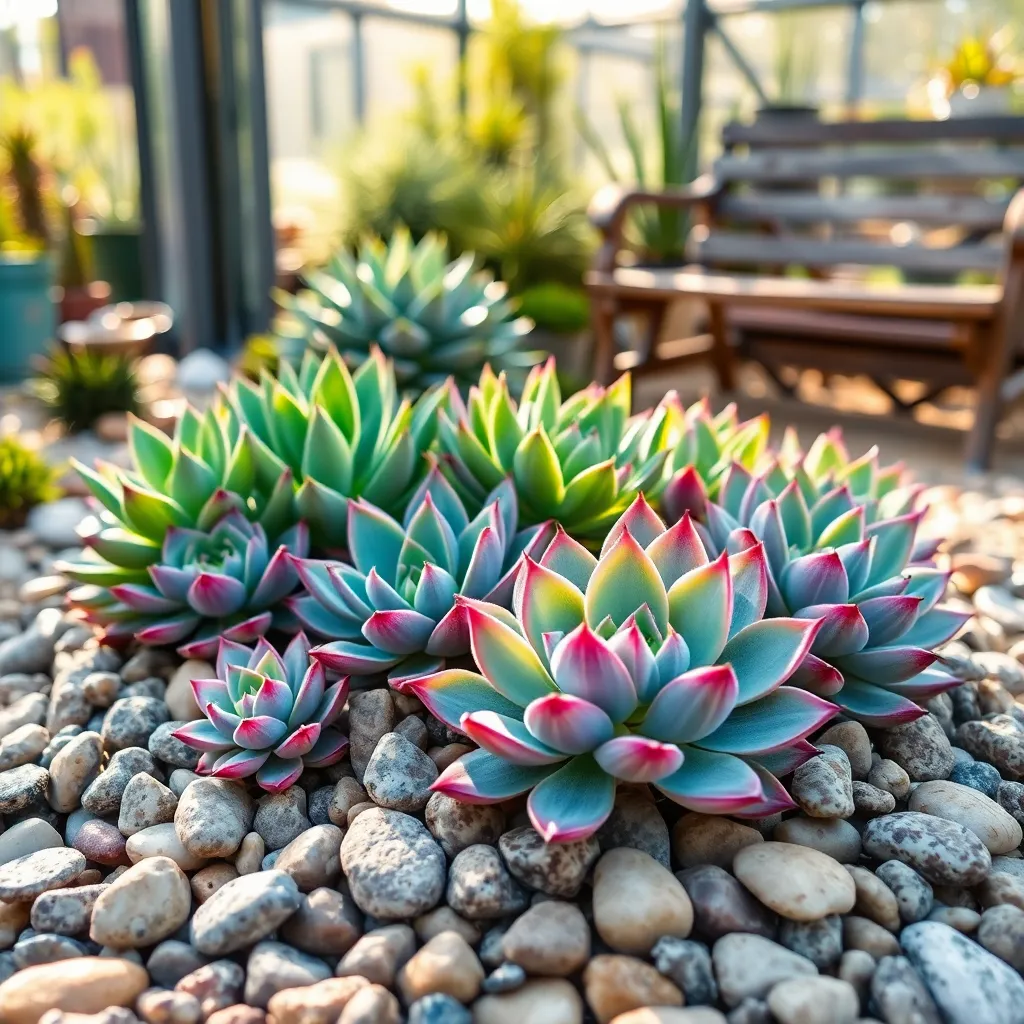
For a truly captivating addition to your succulent collection, consider the vibrant Dudleya varieties. These rosette-forming succulents are not only eye-catching but also incredibly resilient, making them a fantastic choice for both novice and experienced gardeners.
Notably, Dudleyas thrive in well-draining soil, which is essential to prevent root rot. A gritty mix of cactus soil and perlite creates an ideal environment, allowing water to drain away swiftly.
An important tip for Dudleya care is to mimic their natural habitat by watering sparingly. During the growing season, water only once the soil has completely dried out, ensuring the roots remain healthy and robust.
Advanced gardeners can experiment with propagation by gently detaching offsets or leaves in the spring. Allow these cuttings to callus over for a few days before planting them in a suitable soil mix to encourage new growth.
Rare Adromischus Varieties
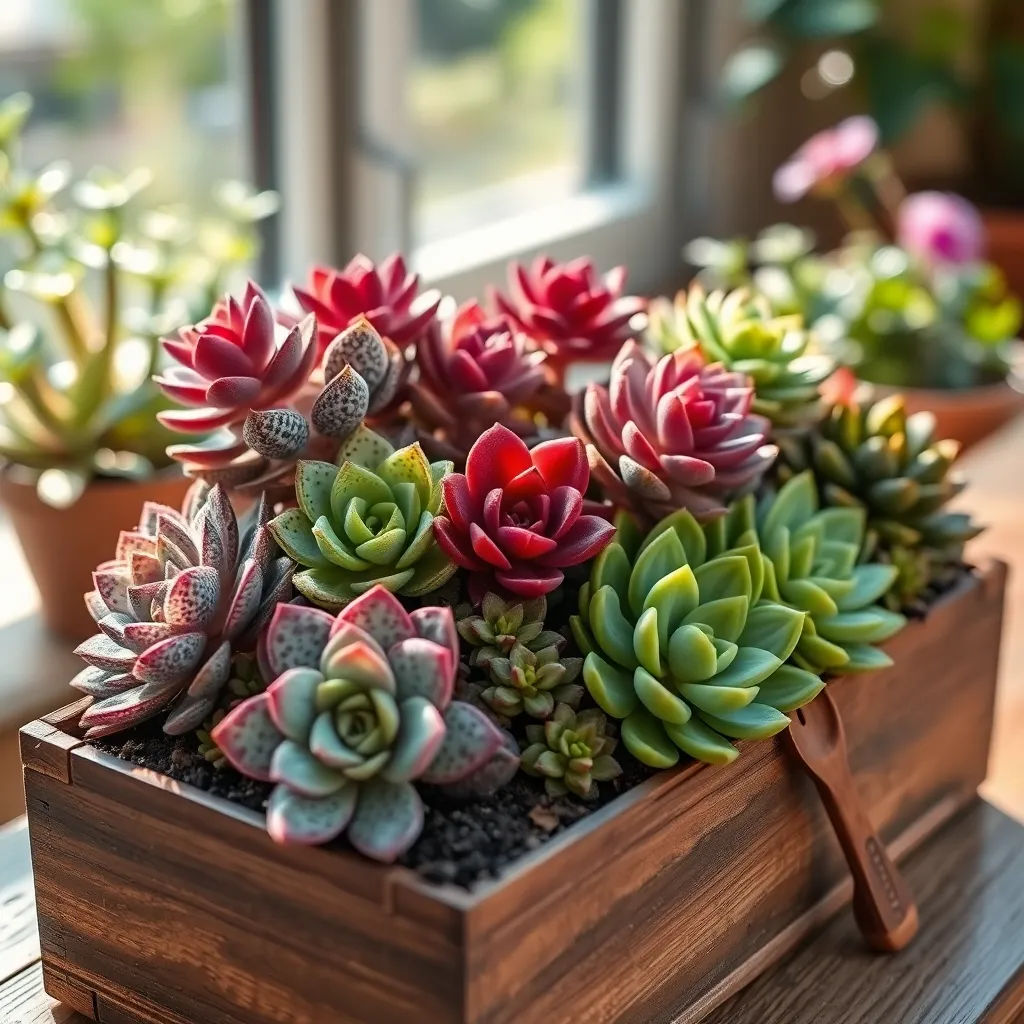
Adromischus succulents are a hidden gem in the world of plant enthusiasts, offering unique textures and colors. When cultivating these rare varieties, it’s crucial to provide them with a well-draining soil mix—consider using a blend of cactus soil and perlite for optimal results.
It’s essential to place Adromischus in a spot where they receive bright, indirect light to thrive. Direct sunlight can scorch their leaves, so if you’re growing them indoors, a windowsill with filtered light is ideal.
Watering Adromischus requires a careful balance, as they are prone to root rot. Allow the soil to dry out completely between waterings, typically watering every 10-14 days, adjusting based on your local humidity and temperature conditions.
For those looking to propagate these captivating plants, leaf cuttings are an effective method. Simply detach a healthy leaf, let it callous over for a few days, and then place it on moist soil until roots begin to form.
Care Tips for Succulent Success
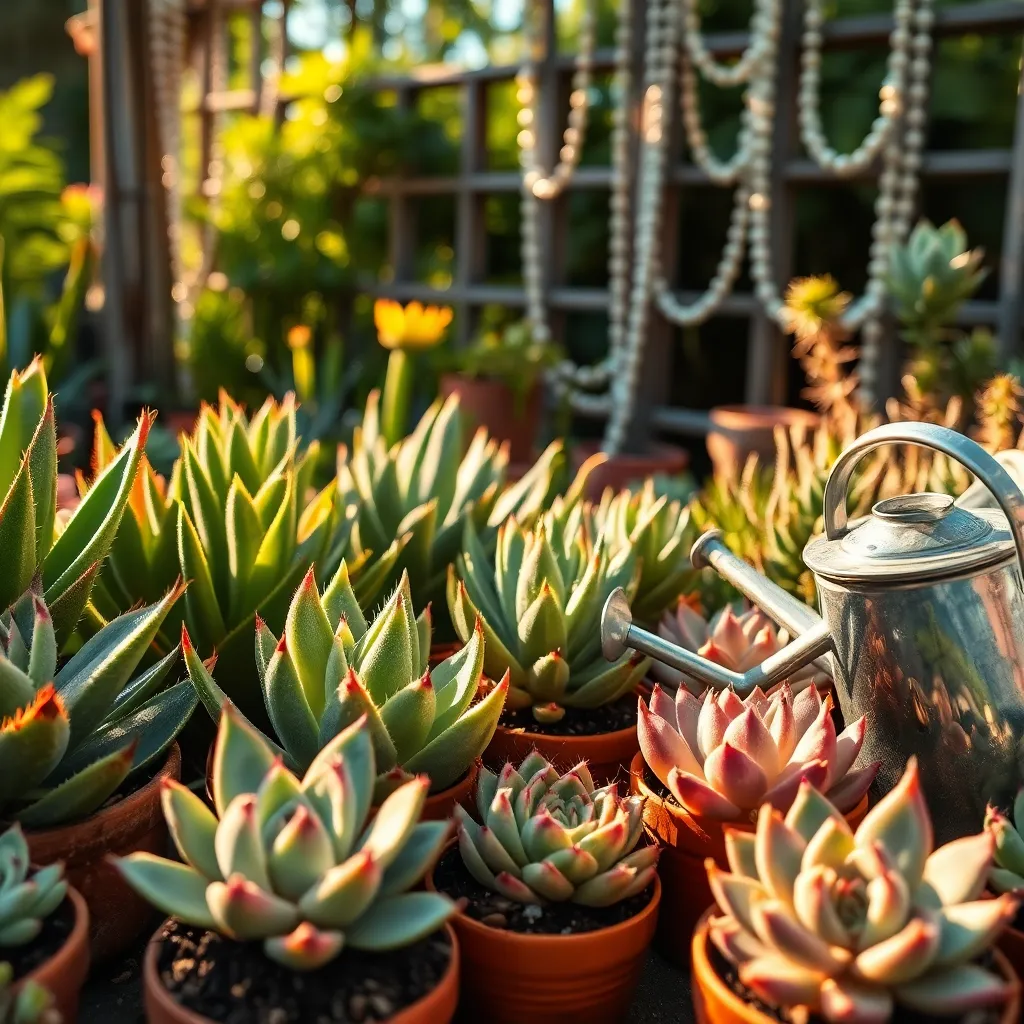
Ensuring succulent success starts with the right soil. Opt for a well-draining cactus or succulent mix to prevent root rot, which is crucial for these drought-loving plants.
Watering is the next key aspect to consider. Allow the soil to completely dry out between waterings, typically every 1-2 weeks, depending on the humidity and temperature of your environment.
Lighting is also a critical factor for succulent health. Most succulents thrive in bright, indirect sunlight, so place them near a window where they can soak up the light without getting scorched.
For those looking to take their succulent care to the next level, consider fertilizing during the growing season. Use a diluted, balanced fertilizer once a month in spring and summer for optimal growth and vitality.
Creating a Succulent Display
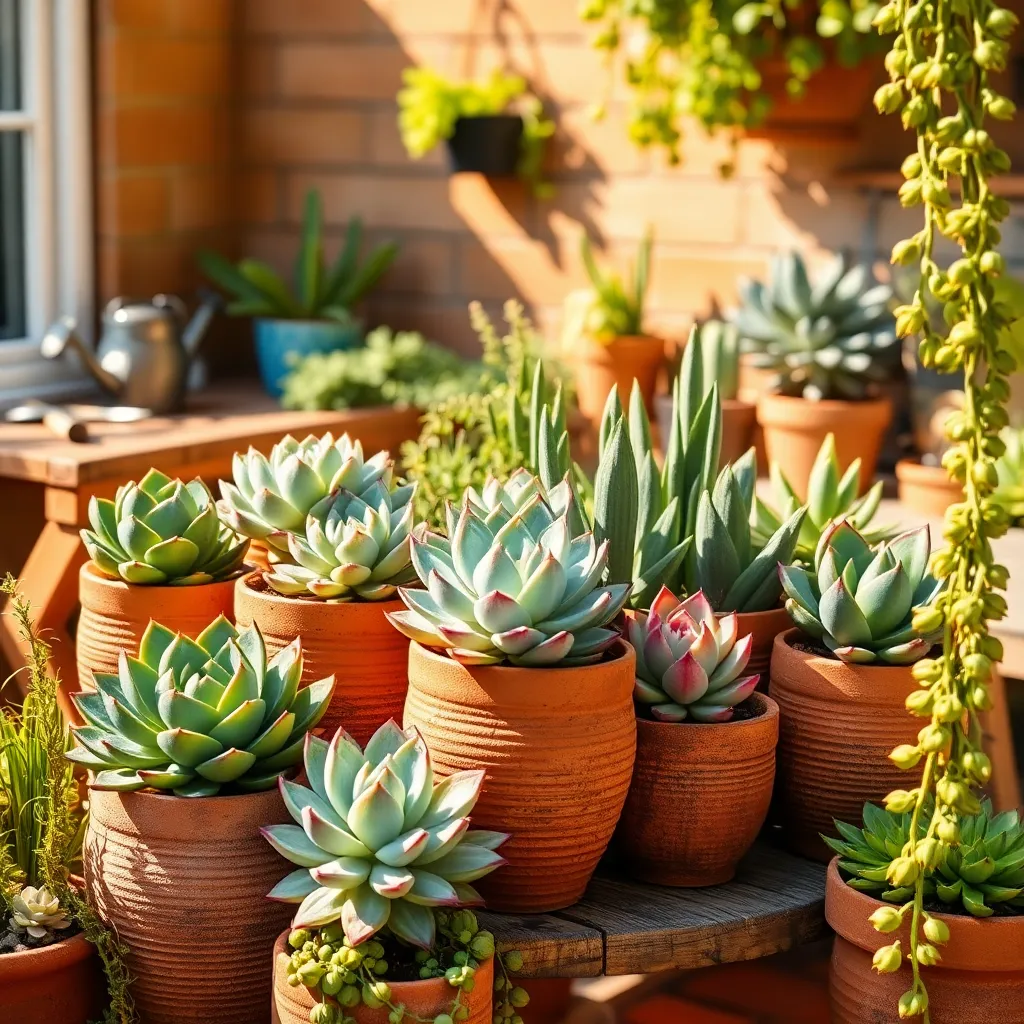
Creating a striking succulent display begins with selecting a diverse array of plants that offer varied shapes, sizes, and colors. Consider using succulents such as Echeveria, Sedum, and Haworthia, which are known for their vibrant hues and unique textures.
To ensure a visually appealing arrangement, opt for a container that complements the succulents’ aesthetic. A shallow, wide pot is ideal as it allows for proper drainage, which is crucial for preventing root rot in these drought-tolerant plants.
Use a well-draining soil mix, such as a cactus or succulent blend, to provide the right conditions for healthy growth. You can enhance the soil’s drainage by adding coarse sand, perlite, or pumice to the mixture.
Once your succulents are potted, position them in a spot that receives ample sunlight, which is essential for maintaining their vibrant colors. Aim for at least six hours of indirect sunlight daily, and rotate the container regularly to ensure even light exposure.
Watering your succulent display requires a careful balance; allow the soil to dry out completely between waterings to mimic their natural arid environment. During the growing season, typically spring and summer, you can water more frequently, but reduce watering in dormant periods like fall and winter.
Conclusion: Growing Success with These Plants
In exploring the 18 eye-catching succulent varieties, we’ve uncovered profound parallels to the foundational elements of thriving relationships. From the resilience of the Zebra Plant to the adaptability of the String of Pearls, each succulent embodies a key relationship concept—such as patience, communication, trust, and growth. These insights serve as powerful reminders that nurturing a relationship requires diversity, attention, and care, much like tending to a vibrant succulent garden.
As an actionable next step, why not choose one relationship concept that resonates with you and focus on nurturing it this week? Whether it’s enhancing communication or practicing patience, small, deliberate actions can lead to significant growth in your relationship.
Remember to save or bookmark this article for future reference. Let it be your go-to guide whenever you need a refreshing perspective or a gentle reminder of the beauty in caring for relationships.
Looking forward, embracing these principles can pave the way for a flourishing relationship landscape, where each connection is as unique and resilient as the succulents we’ve explored. Empower yourself to cultivate a relationship garden that blooms with love and understanding.

